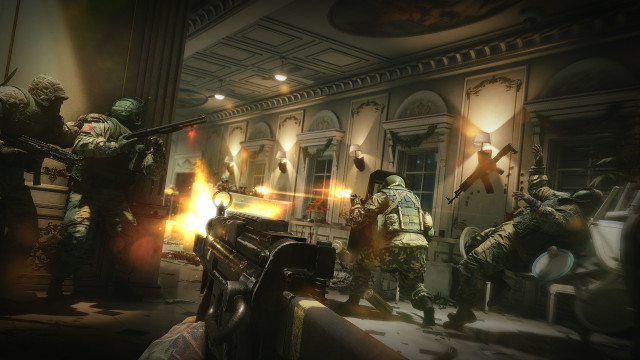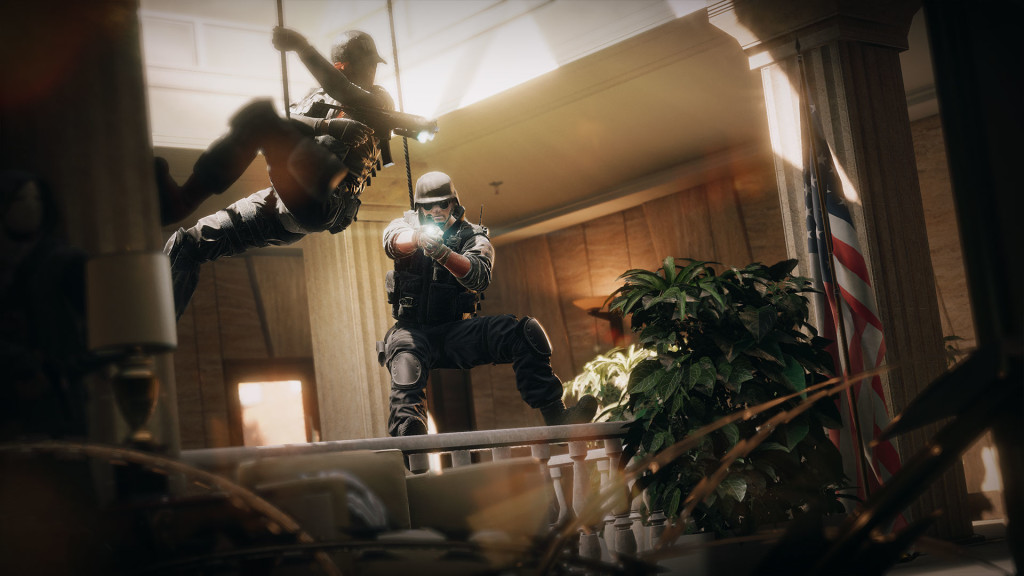In Rainbow Six: Siege, elite forces go head-to-head as defenders fortify their positions against incoming attackers that can breach through walls and ceilings. This competitive setup is perfect for eSports, and but Ubisoft is taking an extra step by partnering with ESL and Microsoft to launch two simultaneous leagues across the PC and Xbox One. Never before in ESL history has a company started two simultaneous leagues, but Ubisoft is up to the ambitious task.
[a]listdaily speaks to Alexandre Remy, Brand Director at Ubisoft for Rainbow Six, about how Rainbow Six is breaking into eSports in a big way with the Rainbow Six Pro League.
What convinced Ubisoft to partner with ESL and Microsoft to create a Rainbow Six Pro League?
Competition is a big part of it the Rainbow Six legacy. The franchise has a strong history of competition since the late 90s with the first games on PC and later with Vegas and Vegas 2 on Xbox.
The other big factor is the team’s DNA. Most of the developers on Siege are avid shooter players and have experience in competitive games in one way or another. So, when we started this game in 2013, it was an ‘easy’ decision to design it with competition in mind.
From a design perspective, we knew we wanted to build a solid competitive shooter and worked hard to make a game that could reach this potential, delivering steady 60 fps, building dedicated servers and creating a game with a high skill ceiling.
The game is still young and is showing potential for esports, but we are not an esports game yet, like League of Legends, Counter-Strike: Global Offensive, or StarCraft who have been on the field for years. We feel we have something that is compatible with the esports scene; but ultimately it’s up to the players and the community to decide.
Ubisoft is making history by running two simultaneous Rainbow Six Siege pro league tournaments across the Xbox One and Windows PC. Why go with such a large undertaking instead of sticking to one platform?
We are indeed in a unprecedented situation today, with a AAA game franchise launching a global esports program on two platforms.
But Rainbow is a special beast. It has its roots in PC and later became popular on Xbox. So, when we discussed with ESL the platform of choice for competition, we knew we had to do both. As soon as we pitched the project to Microsoft, they stepped up and expressed a high interest in supporting a console league. And it is for the best, with players from both console and PC being able to follow platform specific competitions and teams. This hopefully makes our program reach a bigger audience and engage more members of the Rainbow Six community.

What will be some of the challenges in promoting two leagues simultaneously?
The two leagues are very similar in terms of scope, format, number of team invited, prize money; the main difference is that they run on two platforms and have dedicated match & broadcast’s schedules.
We indeed face a challenge of communication and information, to ensure viewers and participants know when to tune in.
What are the features that make Siege ideal for eSports competition?
As early as conception, competition has been a key driver in our choices: we ran internal tournaments every 5 weeks as a way to playtest the game, we had several Pro Teams and experts from established games as consultants.
Doing internal tournaments and talking with competitive players exposed us to the level of discipline and requirements needed to create an esports title. When you have the most talented and dedicated gamers play through your game, it is going to be pushed to its limits as they will try to exploit any weakness there is. It is a tremendous chance to work with such players as it helps us develop a better game. And that benefits all your player base.
How does Siege stand out against established eSports like Call of Duty or Counter-strike?
Rainbow Six has a special place in the shooter genre as, in a way, it’s the father of tactical shooters. Before Counter-strike, Arma or Ghost Recon, there was Rainbow.
In terms of gameplay, all Rainbow games are a blend between reflex shooting and thoughtful planning. With Siege, we tried to keep Rainbow’s legacy intact while introducing game-changing features like procedural destruction and our operator system.
The difference in pacing – slow and tense; the importance of sound – key to locate your enemy; and the overall brutality of the firefights – one-shot-one-kill lethality, combine to make Siege feel different from most shooters on the market. In the shooter genre, Rainbow Six has carved its place over the past decade with its focus on tactics and teamplay.
Does the Rainbow Six Pro League signal the start of an even bigger entry into eSports, with upcoming games like The Division and For Honor?
We have nothing to announce at this time, but we shall see!

